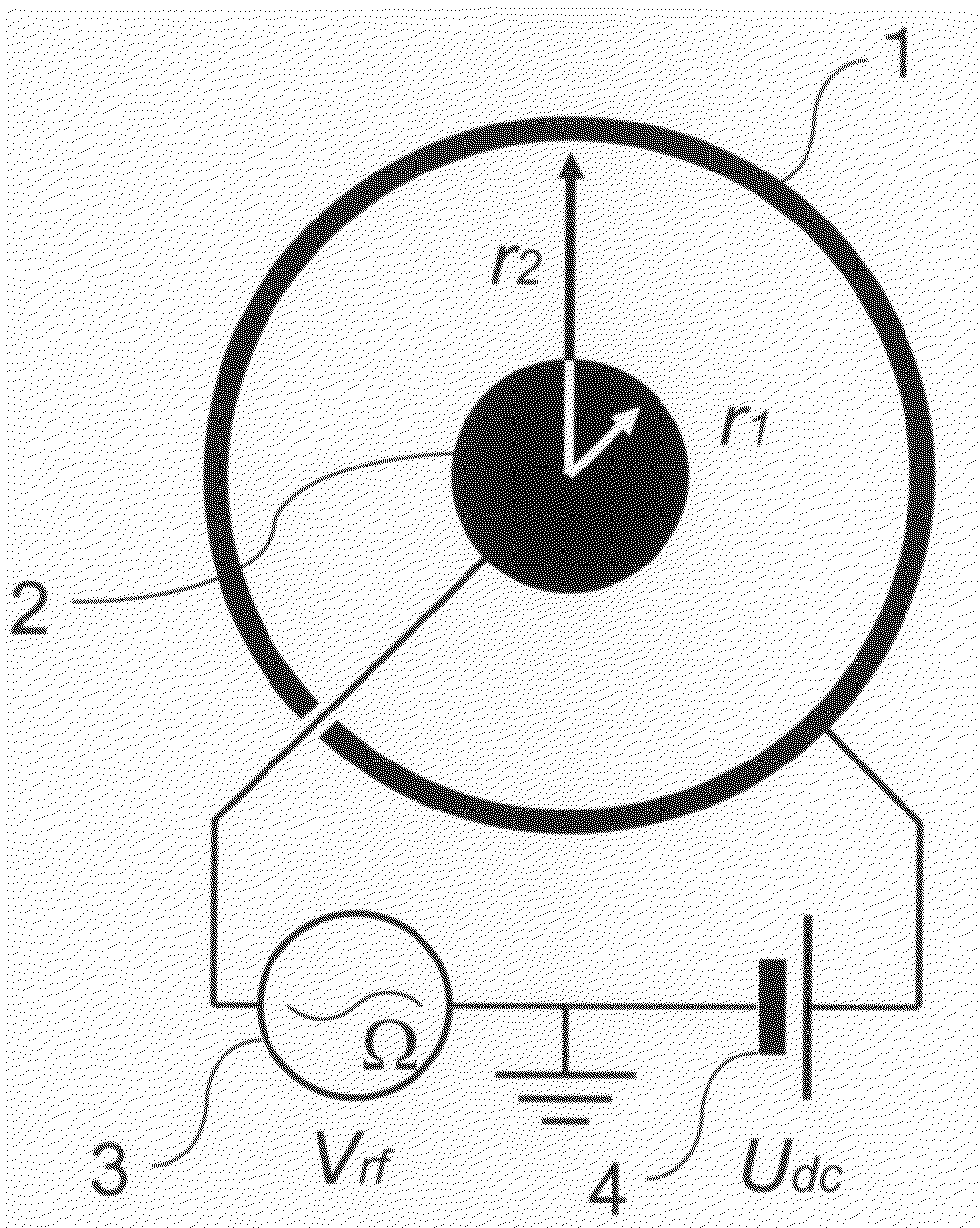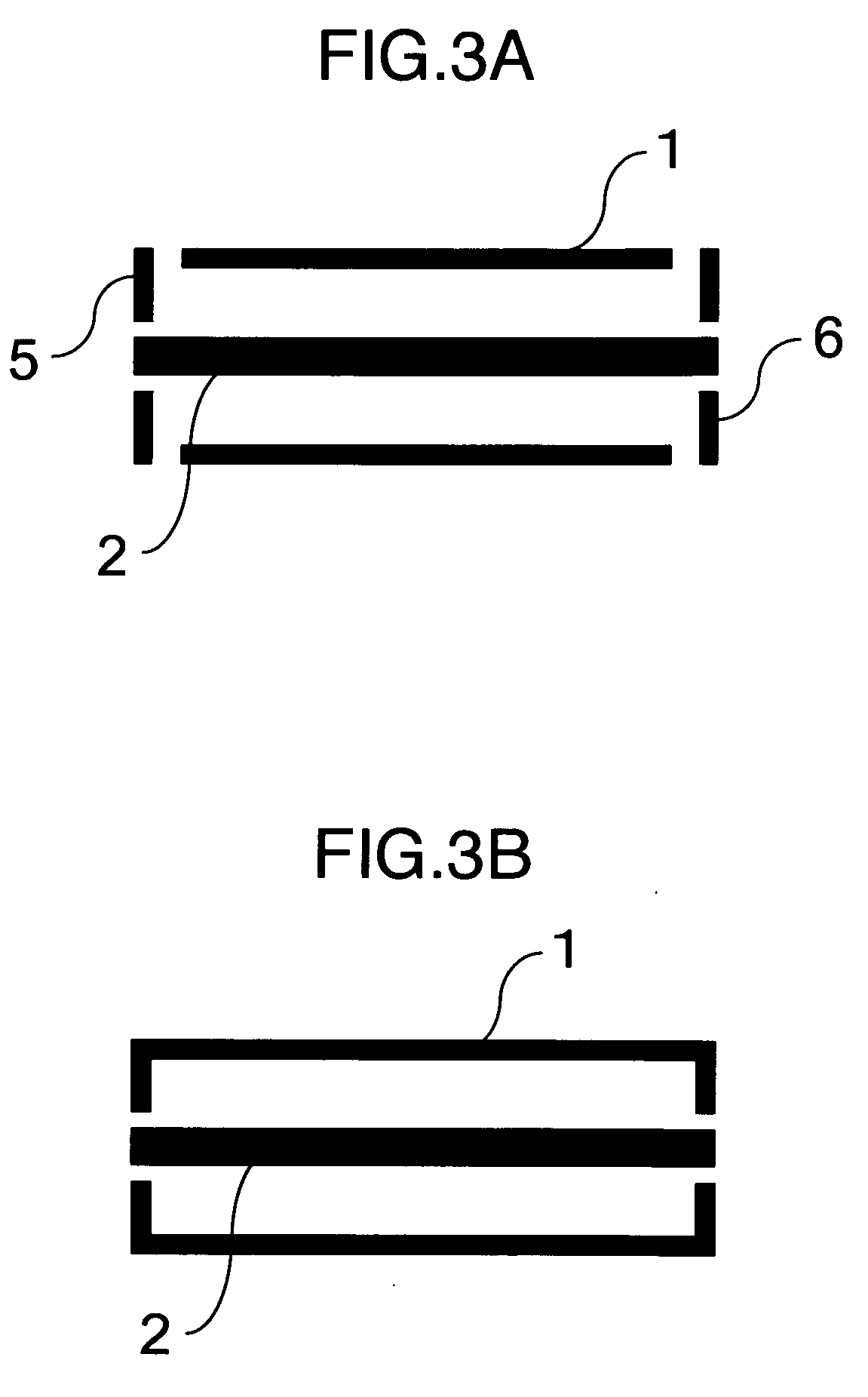Ion trap, mass spectrometer and ion mobility analyzer using the ion trap
a technology of mass spectrometer and ion trap, which is applied in the field of mass spectrometry, can solve the problems of limiting the ion amplification function that has traditionally been used fails to work, and high price, and achieves accurate ion trajectory, high price, and limited extension of the use of this device
- Summary
- Abstract
- Description
- Claims
- Application Information
AI Technical Summary
Benefits of technology
Problems solved by technology
Method used
Image
Examples
first embodiment
[0032]This embodiment deals with the basic matters of the one-dimensional ion trap including a solid-cylindrical electrode (inner electrode) formed of a solid cylinder and a hollow-cylindrical electrode (outer electrode) formed of a hollow cylinder. The electrode structure includes the hollow-cylindrical electrode 1 (radius: r2) and the solid-cylindrical electrode (radius: r1) arranged on the same axis. A radio frequency voltage (amplitude Vrf, frequency Ω / 2π) is applied to the solid-cylindrical electrode using a radio frequency voltage power supply 3, where the DC bias of the rf voltage should be zero, while a DC voltage (Udc) is applied to the hollow-cylindrical electrode using a DC voltage power supply 4, where the rf voltage of the DC voltage should be zero. The aforementioned arrangement in terms of voltage is shown in FIG. 1.
[0033]First, the motion of ions with the electrode arrangement and voltage described above is theoretically described. The potential formed between the tw...
second embodiment
[0057]An application of the one-dimensional ion trap as an analysis means is described. This application is based on the principle defined by Equations (3) and (4) for determining a stable area according to the first embodiment. Specifically, the instability in the trap conditions is utilized as a mass spectrometric analysis method. As described in SUMMARY OF THE INVENTION above, stable ions trapped are instabilized (i.e. instabilized in mass selectivity) by controlling and changing the voltage condition, and the electron current generated by bombarding the electrode is measured by the ampere meter. In this way, the m / z value and the quantity of the trapped ions are measured. This operation has the feature that the mass spectrometry conducted using the static stability conditions of ions makes possible the analysis independent of the gas pressure. Specifically, the operation is possible in low vacuum. The term “low vacuum” is generally defined as about 1 to 10−6 Torr, while the term...
third embodiment
[0068]An application of the invention to an ion mobility analysis means is explained. A system configuration is similar to that of the second embodiment.
[0069]First, the mass analysis operation (second embodiment) is performed to determine the m / z value of target ions. Then, the ion species is isolated by the method described in the first embodiment. The isolated ions are set to a high voltage at a radio frequency amplitude to locate it in the neighborhood of the outside of the ion trap to lengthen the drift distance. Then, the voltage Vrf is turned off instantaneously, and ions having a large ion mobility K bombard the solid-cylindrical electrode before the remaining ions. The time difference between the time during which the radio frequency is turned off and the time when the ion current is measured indicates the ion mobility. By using this operation, the two-dimensional measurement of the mass-to-charge ratio and the ion mobility of the specimen ions is made possible. Also, the i...
PUM
 Login to View More
Login to View More Abstract
Description
Claims
Application Information
 Login to View More
Login to View More - R&D
- Intellectual Property
- Life Sciences
- Materials
- Tech Scout
- Unparalleled Data Quality
- Higher Quality Content
- 60% Fewer Hallucinations
Browse by: Latest US Patents, China's latest patents, Technical Efficacy Thesaurus, Application Domain, Technology Topic, Popular Technical Reports.
© 2025 PatSnap. All rights reserved.Legal|Privacy policy|Modern Slavery Act Transparency Statement|Sitemap|About US| Contact US: help@patsnap.com



